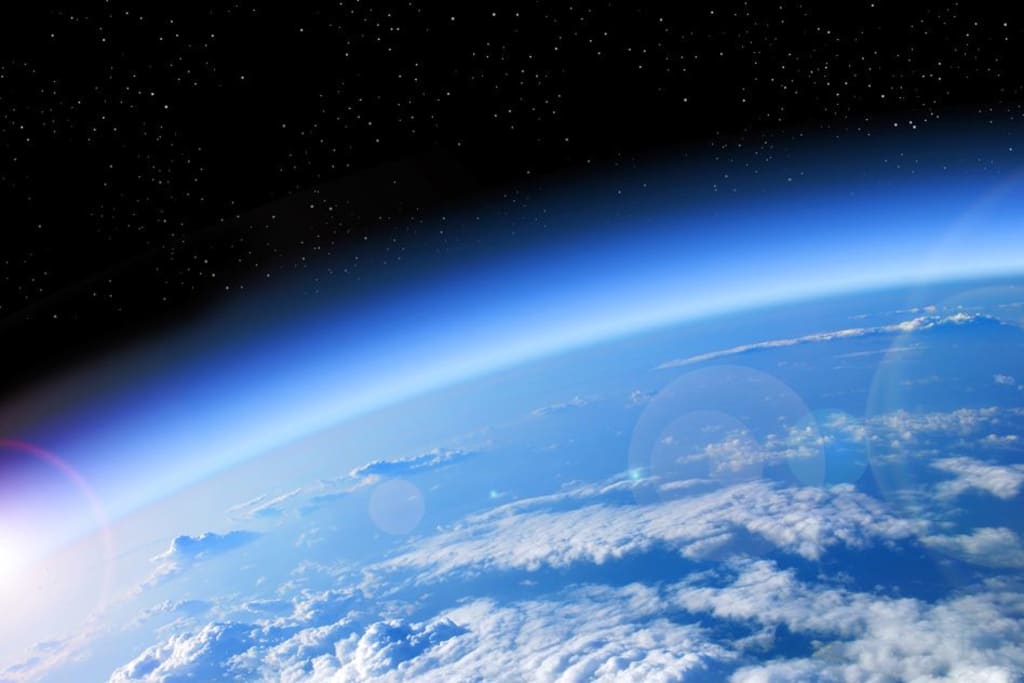WHERE DID EARTH’S OXYGEN COME FROM? A NEW STUDY HINTS AT AN UNEXPECTED SOURCE
This study could partly explain the lack of oxygen and, ultimately, life on the other rocky planets in the future as well.

Our research, published in Nature Geoscience, adds a tantalizing new possibility: that at least some of the Earth’s early oxygen came from a tectonic source via the movement and destruction of the Earth’s crust.
THE ARCHEAN EARTH
The Archean eon represents one-third of our planet’s records, from 2.Five billion years ago to four billion years in the past.
This alien Earth became a water-international covered in green oceans, shrouded in a methane haze, and completely missing multi-cellular lifestyles. Another alien element of this global turned into the character of its tectonic pastime.
Click Here To Discover The Best Way To Lose Weight Without Exercises
On current Earth, the dominant tectonic activity is called plate tectonics, wherein oceanic crust — the outermost layer of the Earth underneath the oceans — sinks into the Earth’s mantle (the location among the Earth’s crust and its core) at points of convergence known as subduction zones. However, there may be giant debate over whether plate tectonics operated lower back in the Archean era.
One feature of contemporary subduction zones is their affiliation with oxidized magmas. These magmas are shaped when oxidized sediments and backside waters — bloodless, dense water near the ocean ground — are introduced into the Earth’s mantle. This produces magma with high oxygen and water content.
SEE: 7 Eating regimen Mix-ups Undermining Your Weight reduction.
Our research aimed to check whether or not the absence of oxidized substances in Archean backside waters and sediments could save you the formation of oxidized magmas. The identity of such magmas in Neoarchean magmatic rocks should offer proof that subduction and plate tectonics came about 2.7 billion years ago.
THE EXPERIMENT
We accumulated samples of 2750- to 2670-million-year-vintage granitoid rocks from throughout the Abitibi-Wawa sub province of the Superior Province — the largest preserved Archean continent stretching over 2000 km from Winnipeg, Manitoba, to a long way-jap Quebec. This allowed us to analyze the level of oxidation of magmas generated throughout the Neoarchean generation.
SEE: Practicing Securely With Diabetes.
Measuring the oxidation nation of those magmatic rocks — formed through the cooling and crystallization of magma or lava — is difficult. Post-crystallization events may additionally have changed those rocks via later deformation, burial, or heating.
So, we decided to observe the mineral apatite, that is gift in the zircon crystals in those rocks. Zircon crystals can face up to the acute temperatures and pressures of put up-crystallization events. They preserve clues about the environments wherein they had been in the beginning shaped and offer particular a long time for the rocks themselves.
Small apatite crystals which can be much less than 30 microns huge — the dimensions of a human pores and skin cell — are trapped within the zircon crystals. They include sulfur. By measuring the quantity of sulfur in apatite, we can establish whether the apatite grew from an oxidized magma.
We have been able to efficiently measure the oxygen fugacity of the authentic Archean magma — which is basically the quantity of loose oxygen in it — using a specialized method referred to as X-ray Absorption Near Edge Structure Spectroscopy (S-XANES) on the Advanced Photon Source synchrotron at Argonne National Laboratory in Illinois.
CREATING OXYGEN FROM WATER?
We found that the magma sulfur content, which was initially round 0, improved to 2000 parts in keeping with million round 2705 million years. This indicated the magma had turn out to be more sulfur-wealthy. Additionally, the predominance of S6+ — a form of sulfur ion — within the apatite cautioned that the sulfur changed into from an oxidized source, matching the records from the host zircon crystals.
Click Here To Discover The Best Way To Lose Weight Without Exercises
These new findings suggest that oxidized magmas did form in the Neoarchean era 2.7 billion years ago. The information display that the lack of dissolved oxygen inside the Archean ocean reservoirs did now not save you the formation of sulfur-wealthy, oxidized magmas inside the subduction zones. The oxygen in those magmas have to have come from another supply and was in the long run released into the atmosphere during volcanic eruptions.
We located that the prevalence of those oxidized magmas correlates with predominant gold mineralization events within the Superior Province and Yilgarn Craton (Western Australia), demonstrating a connection among those oxygen-wealthy assets and worldwide, global-magnificence ore deposit formation.
The implications of those oxidized magmas pass beyond the understanding of early Earth geodynamics. Previously, it became idea not likely that Archean magmas could be oxidized whilst the sea water and ocean ground rocks or sediments have been not.
While the precise mechanism is doubtful, the occurrence of these magmas indicates that the process of subduction, in which ocean water is taken masses of kilometers into our planet, generates free oxygen. This then oxidizes the overlying mantle.
Our study shows that Archean subduction might have been a important, unforeseen thing within the oxygenation of the Earth, the early whiffs of oxygen 2.7 billion years ago and additionally the Great Oxidation Event, which marked an increase in atmospheric oxygen through two percentage 2.Forty five to 2.32 billion years ago.
As some distance as we recognize, the Earth is the only area within the solar system — beyond or present — with plate tectonics and lively subduction. This suggests that this take a look at should partially give an explanation for the shortage of oxygen and, in the end, existence on the opposite rocky planets within the future as nicely.






Comments
There are no comments for this story
Be the first to respond and start the conversation.